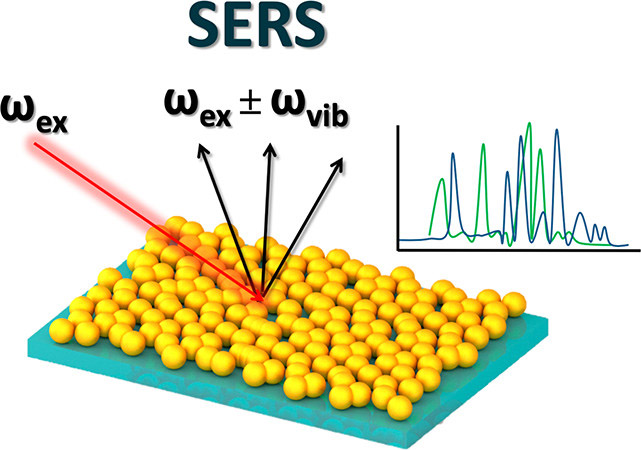Surface-Enhanced Raman Scattering (SERS): Unlocking the Potential of Raman Spectroscopy
What is Surface-Enhanced Raman Scattering (SERS)?
Surface-enhanced Raman scattering (SERS) is a powerful analytical technique that significantly enhances the Raman scattering signal of molecules adsorbed on or near the surface of certain metal nanostructures. SERS combines the specificity of Raman spectroscopy with the signal enhancement provided by the interaction between the molecule and the metal surface, enabling highly sensitive detection and identification of molecules at low concentrations.

SERS Substrates
The choice of SERS substrate is crucial for achieving optimal signal enhancement. Commonly used SERS substrates include:
- Noble Metal Nanoparticles: Gold, silver, and copper nanoparticles are widely used as SERS substrates due to their strong localized surface plasmon resonance (LSPR) properties. These nanoparticles can be synthesized in various shapes, such as spheres, rods, and stars, to tune their LSPR properties for specific applications.
- Nanostructured Surfaces: Nanostructured surfaces, such as nanoholes, nanopillars, and nanogratings, can be fabricated on metal films to create SERS-active substrates. These nanostructures provide a large surface area for molecular adsorption and can generate strong electromagnetic field enhancements.
- Hybrid Nanostructures: Hybrid nanostructures, such as core-shell nanoparticles and nanoparticle-decorated graphene, have been developed to combine the advantages of different materials for enhanced SERS performance. These hybrid structures offer additional functionality, such as improved stability and biocompatibility.
SERS Enhancement Mechanisms
The SERS enhancement is primarily attributed to two mechanisms:
Electromagnetic Enhancement
The electromagnetic enhancement arises from the interaction between the incident light and the localized surface plasmons of the metal nanostructure. When the incident light matches the LSPR frequency of the metal, it induces a strong local electromagnetic field enhancement near the metal surface. Molecules adsorbed within this enhanced field experience a significant increase in their Raman scattering cross-section, leading to a stronger Raman signal.
Chemical Enhancement
The chemical enhancement is related to the charge transfer between the molecule and the metal surface. When the molecule adsorbs on the metal surface, its electronic structure can be modified due to the formation of a chemical bond or the overlap of electronic states. This modification can lead to resonance Raman scattering, where the incident light matches the electronic transition of the molecule-metal complex, resulting in an enhanced Raman signal.
Applications of SERS
SERS has found numerous applications across various fields, leveraging its high sensitivity and molecular specificity:
Biosensing and Diagnostics
SERS has emerged as a powerful tool for biosensing and diagnostic applications. SERS-based biosensors have been developed for the detection of various analytes, including proteins, nucleic acids, and small molecules. The high sensitivity of SERS allows for the detection of biomarkers at low concentrations, enabling early disease diagnosis and monitoring.
Environmental Monitoring
SERS has been applied for the detection and monitoring of environmental pollutants, such as pesticides, heavy metals, and organic contaminants. SERS-based sensors offer rapid and on-site analysis capabilities, enabling real-time monitoring of environmental samples.
Forensic Analysis
SERS has shown great potential in forensic analysis, particularly in the identification of trace evidence, such as drugs, explosives, and bodily fluids. The molecular specificity of SERS allows for the unambiguous identification of substances, even in complex matrices.
Single-Molecule Detection
The high sensitivity of SERS has enabled the detection and characterization of single molecules. Single-molecule SERS studies have provided valuable insights into molecular interactions, conformational changes, and reaction dynamics at the nanoscale.
Challenges and Future Perspectives
Despite the significant advancements in SERS, several challenges need to be addressed for its widespread adoption. One of the main challenges is the reproducibility and uniformity of SERS substrates, which can affect the reliability and quantitative analysis of SERS measurements. Efforts are being made to develop standardized protocols and substrates for consistent SERS performance.
Future research in SERS will focus on the development of advanced SERS substrates with improved sensitivity, reproducibility, and specificity. The integration of SERS with other analytical techniques, such as microfluidics and mass spectrometry, will enable high-throughput and multiplexed analysis. Furthermore, the exploration of SERS for in vivo and in situ applications, such as real-time monitoring of biological processes and drug delivery, will open up new avenues for SERS-based sensing and imaging.
Further Reading
Nature Reviews Methods Primers, Surface-enhanced Raman spectroscopy
Biosensors, A Review on Surface-Enhanced Raman Scattering
